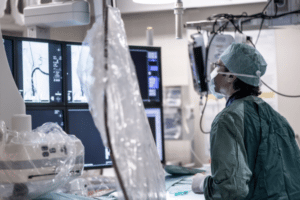An accumulation of toxic components in the nervous system and brain is a characteristic of neurodegenerative diseases including Alzheimer’s and multiple sclerosis. Nerve signals are hampered by them, which causes both physical and mental issues. Activating microglia, immune cells in the nervous system and brain allow them to eliminate waste particles more efficiently, according to a recent survey in rodents. According to the scientists, their finding might result in more beneficial therapies for Alzheimer’s as well as other neurodegenerative illnesses.
The most prevalent type of dementia, impacting 1 out of every 9 Americans of age sixty-five and older, is Alzheimer’s disease. In the UK, more than 1 in fourteen people in this age range have Alzheimer’s disease.
By 2050, there will be 139 million instances of dementia globally, up from the existing 55 million cases, according to the WHO (World Health Organization). However, there are currently no cures for Alzheimer’s disease or other types of dementia. The University of Virginia in Charlottesville researchers have now discovered a chemical that stimulates the brain’s phagocytes, known as microglia, to clear amyloid plaques, which are connected to a variety of characteristics of Alzheimer’s disease. According to the research, which was published in the journal Cell,increasing the activity of the protein spleen tyrosine kinase (SYK) may be an efficacious therapy for Alzheimer’s and other neurodegenerative diseases.
Activating brain cells
Immune cells called microglia are found in the central nervous system. Even though the exact nature of their function is unclear, it has been hypothesized that in addition to orchestrating the neuroinflammatory reaction to tissue destruction, they may be crucial for preserving the brain’s cognitive functions.
Previous investigations exploring the function of microglia in Alzheimer’s disease were unsuccessful to determine if microglia have a positive or negative impact. But according to the latest research, beta-amyloid plaques that obstruct nerve signals and cause disorders like loss of memory, disorientation, speech impediments, and impulsive activity are removed by active microglia.
Studying models of Alzheimer’s, MS
Rats that have undergone genetic engineering to produce amyloid plaques were used in the experiment. The scientists discovered a protein, spleen tyrosine kinase (SYK), that stimulated the microglia to eliminate beta-amyloid plaques using this form of Alzheimer’s disease.
Plaques accumulated and the mice with SYK deficiency lost their memory. The scientists caused the microglia to remove the plaques by stimulating SYK.
According to Dr Majewska, mice paradigms, particularly for Alzheimer’s disease, could be readily generalized to humans, therefore results shown in rats are not usually repeated in humans. The researchers made some analogies to what is seen in [Alzheimer’s disease] brains from human subjects, but this is most likely the greatest uncertainty and probably the most crucial area for future studies.
Similar outcomes were observed by scientists in a rodent variant of multiple sclerosis (MS). A myelin coating that protects human nerve cells hastens nerve signals. In MS, this myelin coating is harmed by the immune system, leading to plaques or lesions that accumulate. Nerve signal conduction is slowed by the build-up of defective myelin.
Scientists discovered that defective myelin accumulated on nerve cells in a mouse lacking SYK. SYK was “critically involved,” they determined, in clearing myelin detritus.
Treatment potential
The authors hypothesize that attacking SYK to increase immunological activity in the brain may provide a strategy to cure many additional neurodegenerative illnesses in addition to MS and Alzheimer’s.
They emphasized the necessity for conducting even more study, saying that “even though our preliminary results indicate that SYK is a critical molecule of neuroprotective microglial reactions in concepts of [Alzheimer’s] and MS,” more research is required to “better describe both the downstream and upstream players that synchronize the impacts of SYK on the advancement of neurodegenerative diseases.”







